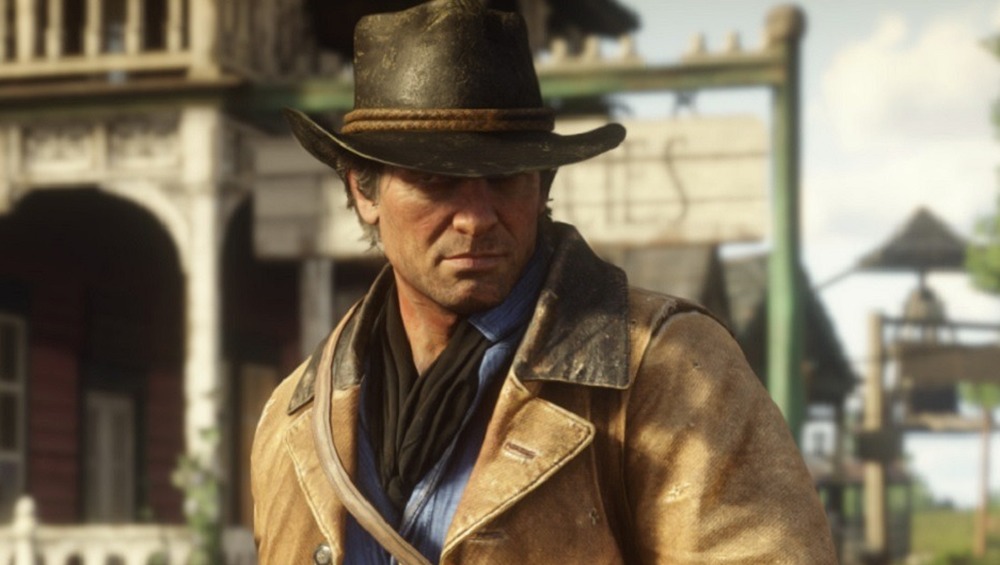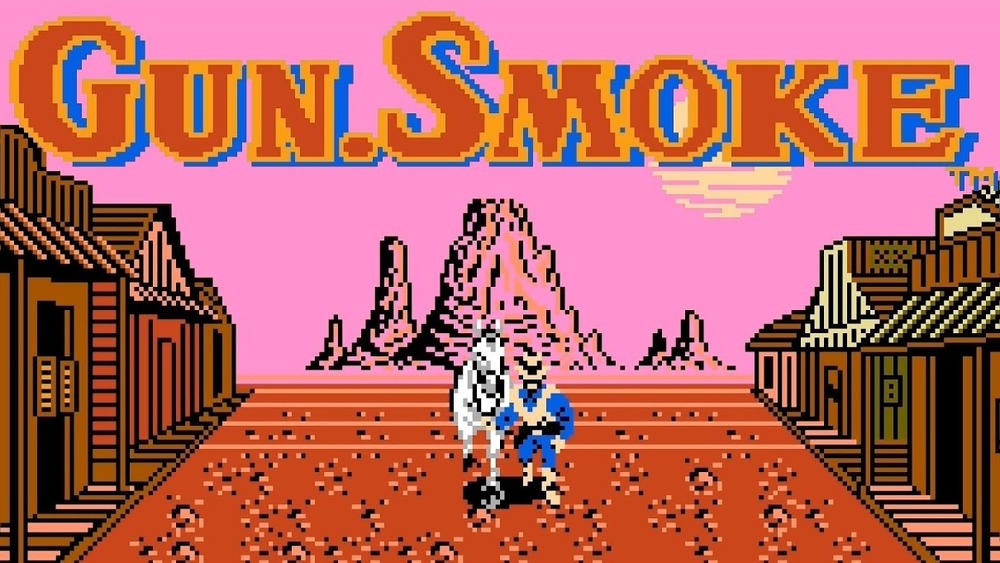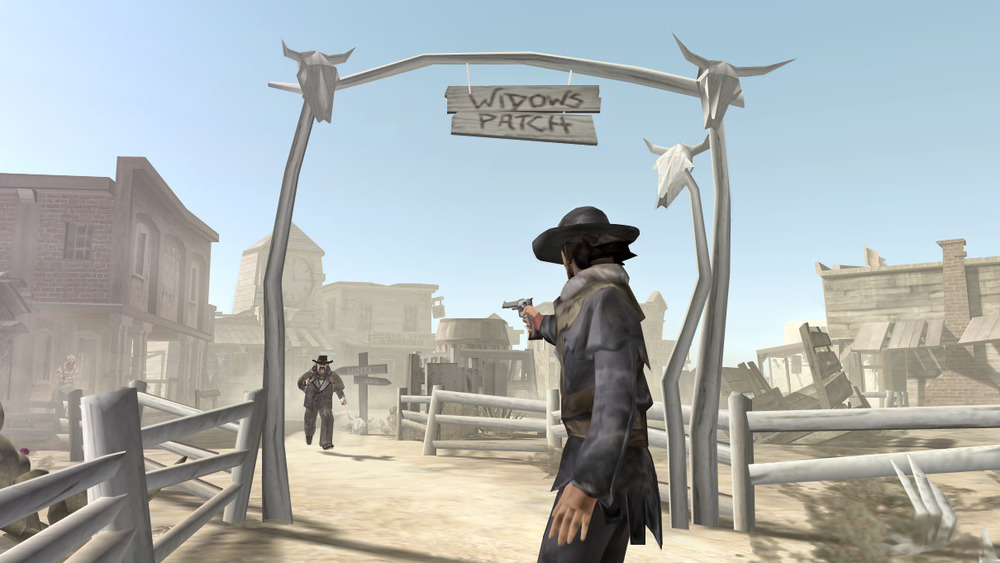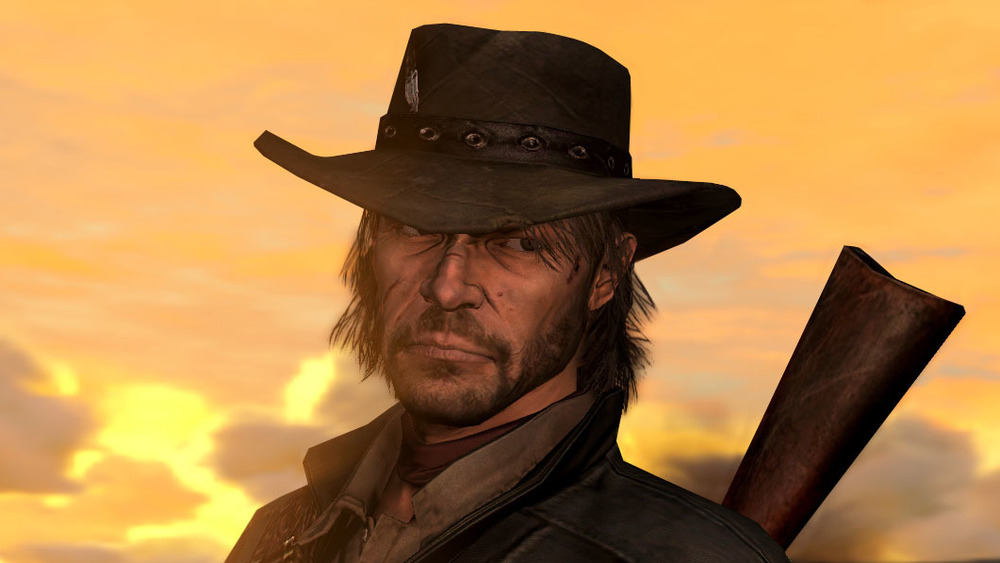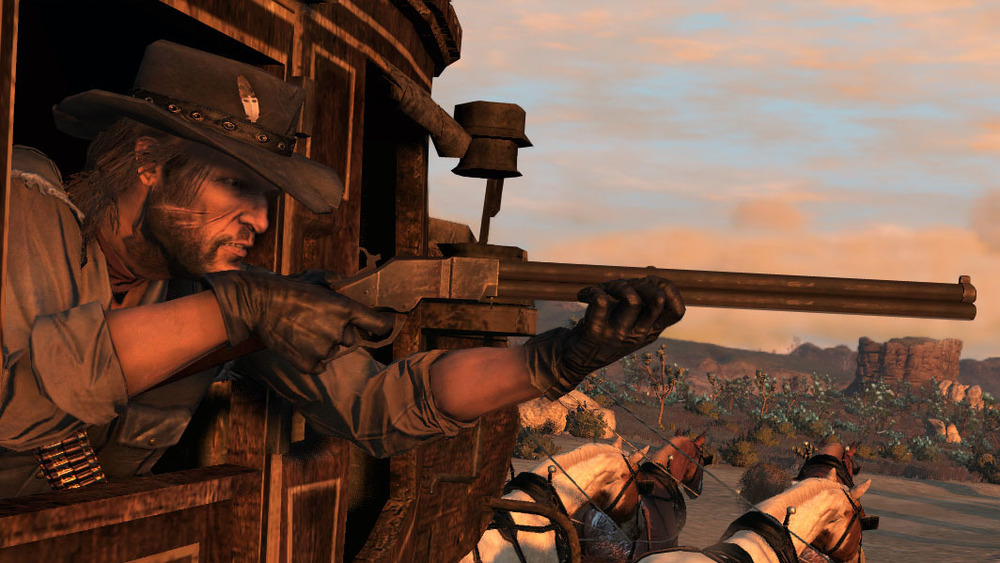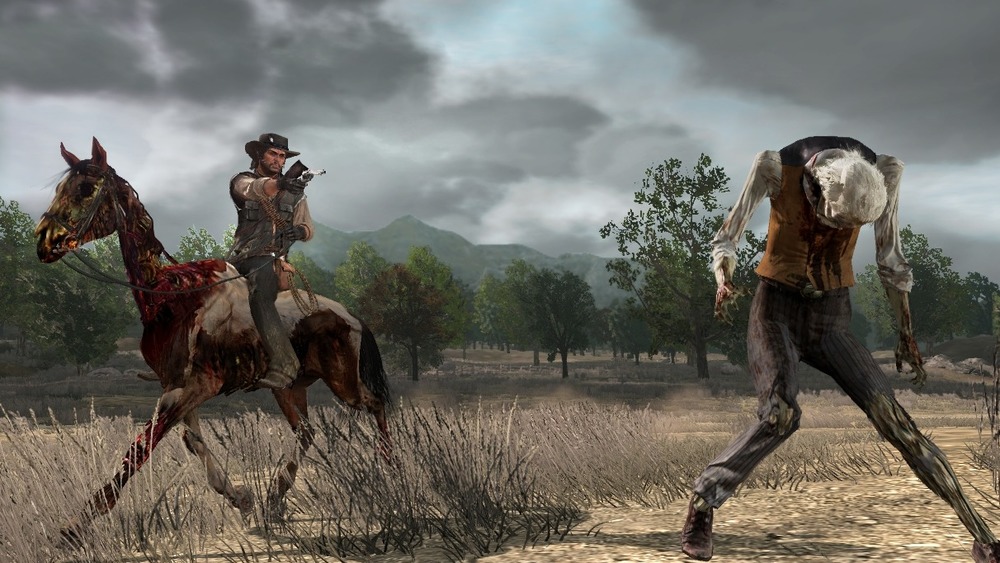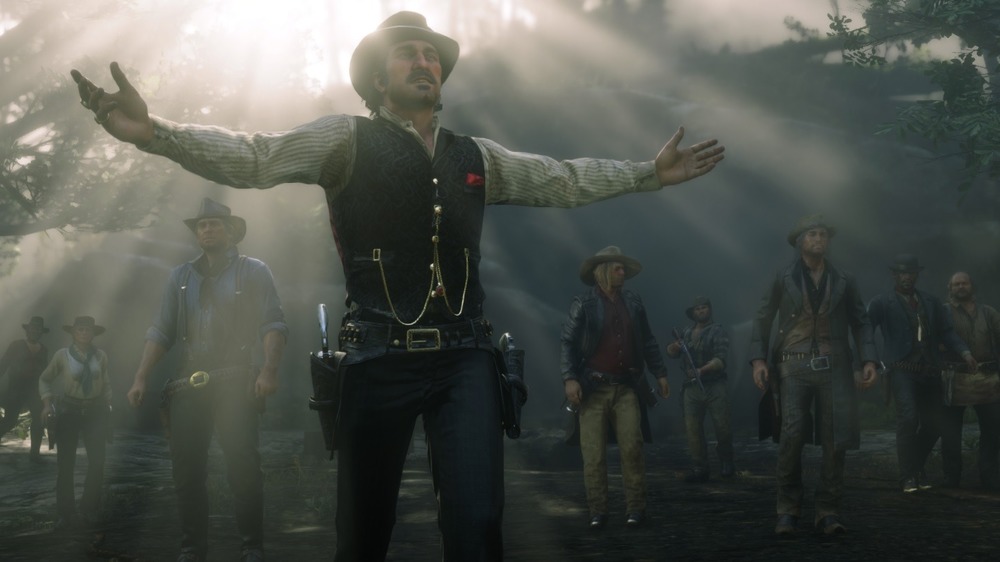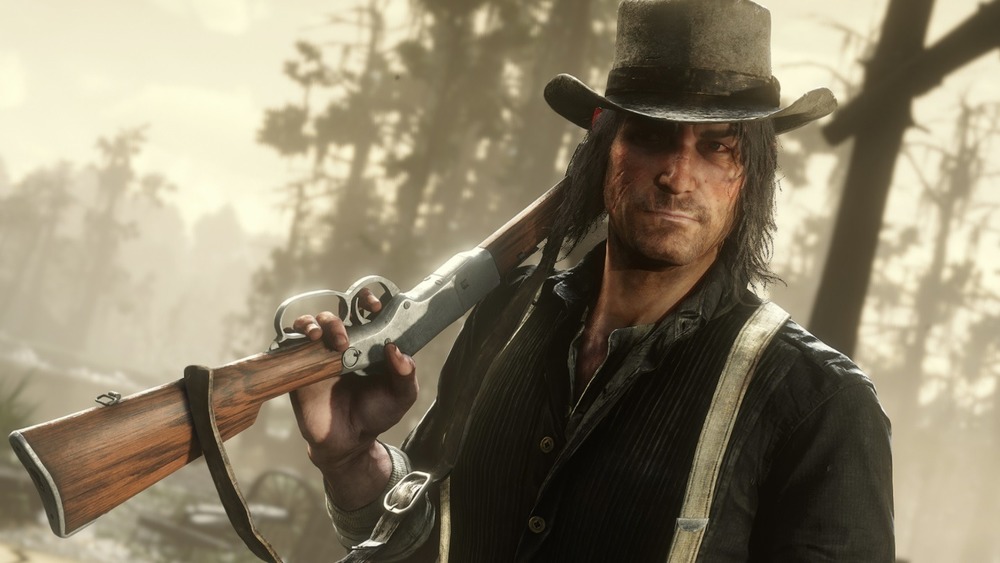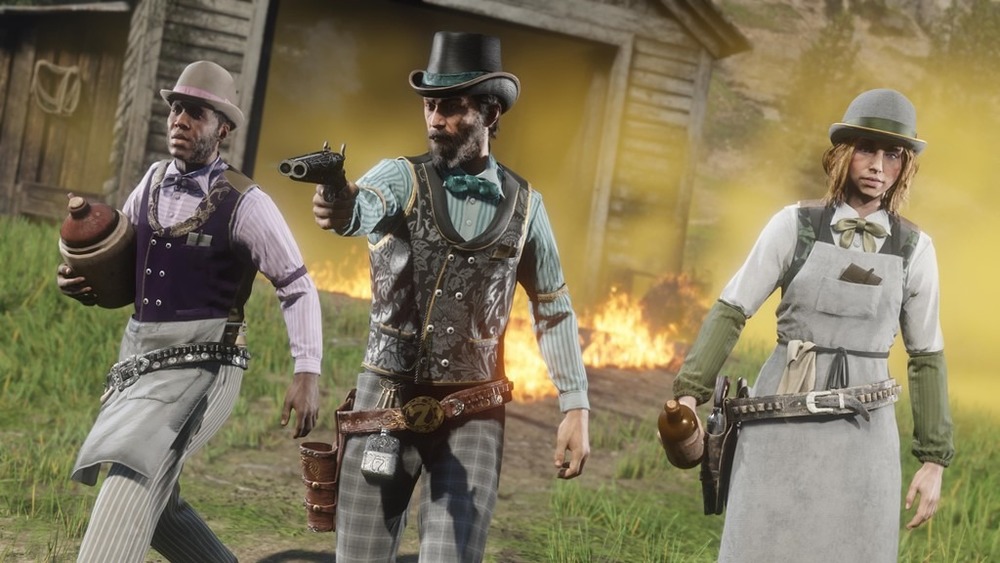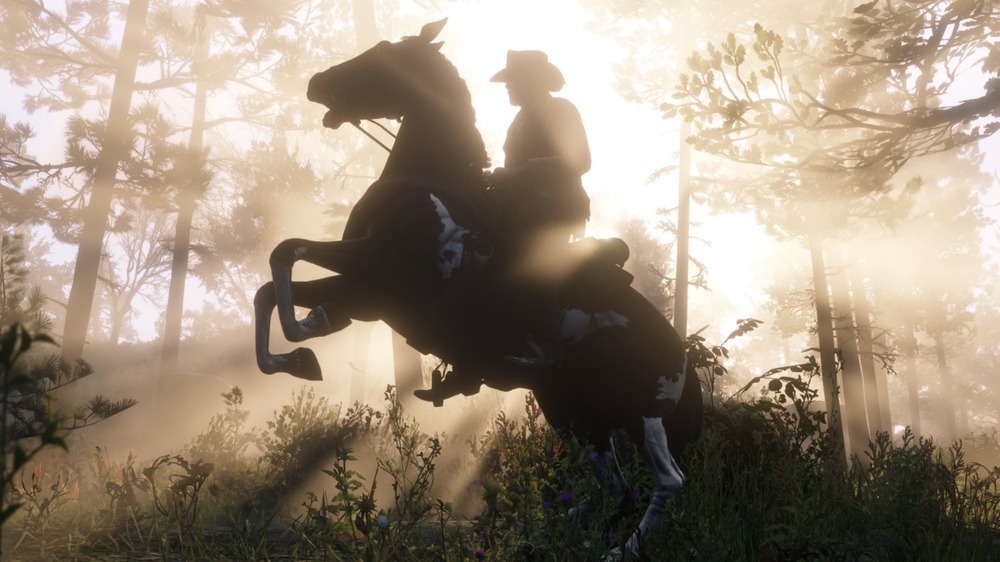The Stunning Transformation Of The Red Dead Series
Draw! In recent years, few games have found as much success or universal acclaim as Red Dead Redemption 2. Rockstar's open world homage to the old west was released in October 2018, and was almost immediately heralded as one of the best games of the current generation, if not of all time. It still sits in the top 10 of Metacritic's highest rated games ever, behind just a few other absolute behemoths.
Over the years — the first Red Dead released for Xbox and PS2 all the way back in 2004 — Rockstar has shown its ability to adapt and change the Red Dead series to keep it fresh and to keep cowpokes coming back for more. Today, you'll get a look at how the Red Dead franchise has changed over the years, both in the way it looks and how the gameplay has evolved.
This is the stunning transformation of the Red Dead series.
It drew inspiration from a 1985 title
Don't let the later titles in the series fool you –- Red Dead Redemption 2 is actually the third game in the series. The original game in the franchise that was released in 2004 was actually called Red Dead Revolver, but the series can trace its "roots" back even further than that. When Red Dead Revolver was originally conceived, it was based on an old arcade shooter called Gun.Smoke.
Originally, Capcom planned the release of Red Dead Revolver, not Rockstar. Though it wasn't directly tied to Gun.Smoke, watching an early trailer of the game shows that it was much more a big, arcade-y shooter than the dramatic, contemplative westerns that the Red Dead series would become.
You can see the same type of influence in other Capcom franchises. USGamer wrote that Resident Evil drew inspiration from a Famicom horror title called Sweet Home, and Maximo: Ghosts to Glory grew from the bones of Ghosts 'N Goblins. Capcom cancelled Red Dead Revolver before it was released, and the Gun.Smoke connection was lost when Rockstar swooped in to continue developing the game.
Red Dead Revolver doesn't have a lot in common with its sequels
Even though Rockstar developed Red Dead Revolver and the two sequels that followed it, Revolver doesn't have much in common with the critically acclaimed Red Dead Redemption games. It still features an old west setting and plenty of gunplay, but things are much more linear.
A big part of this is due to the technical limitations of the PS2 and Xbox. The type of open world — like what's featured in Red Dead Redemption – just wasn't really possible on the hardware of the time. The plot of Red Dead Revolver also didn't have nearly the "shades of grey" theme that Rockstar is known for -– it's a much more by the book tale of righteous revenge focusing on a small group of bounty hunters banding together to settle old family scores. Red Dead Revolver had a fairly positive reception, but not nearly the glowing reviews of its sequels.
If you want to go back to the series roots and see how Red Dead originally looked, there are plenty of good videos to check out. It isn't much of a stretch to imagine most everyone is glad the game evolved the way it did.
The culture of crunch
Rockstar Games found enough success and saw enough potential in the Red Dead franchise to begin working on a sequel to Revolver not long after its release. However, like many of Rockstar's big titles, it would be quite some time until Red Dead Redemption saw the light of day. There was a lot of hype surrounding the game, and another problem soon came to the forefront of Redemption's development: crunch.
Yes, crunch working conditions were an issue in video game development even a decade a go. A Kotaku piece from January 2010 (a few months before the release of Red Dead Redemption) discussed the "deceptive, exploitative and ultimately harmful" working conditions the development team experienced while working on Red Dead Redemption.
Employees anonymously released statements about the working conditions they were suffering through, including being forced into 70+ hour work weeks, resulting in "mental, physical and emotional stress." The anonymous claims were also backed up by ex-employees, indicating this was a persistent problem.
And, the last fans heard, it still is. Though Rockstar Games later claimed it was making serious cultural changes in the company to address it, Red Dead Redemption 2's development was also plagued with claims of crunch.
Redemption is more than just a name
When the company was developing Red Dead Redemption, the company banked on the spaghetti western setting of Revolver pairing perfectly with the sandbox storytelling of Grand Theft Auto. That proved to be remarkable insight, as Red Dead Redemption released to huge sales and universally positive reviews.
Nearly every critic and gamer around loved the introspective and character-driven western, from expected gaming outlets to mainstream publications like The New York Times. Amazingly, much of the world in Red Dead Redemption seemed to come together because it was so unlike what else was available. In an IGN retrospective, Rob Nelson, who worked as an art director for RDR, said "There were moments while we worked on it where it started to feel really good just to play it, and it was just a world that you didn't want to leave."
Gone were the movie set-looking levels of Revolver, replaced by a world that felt, at the time, like a living, breathing place. The story of John Marston was compelling, and the setting that everything played out in was a joy to explore. Rockstar had done it again.
A non-canonical zombie sidequest
DLC has been around for quite some time now, and these days, it is almost expected that a game will include that or some other games-as-a-service component. Red Dead Redemption took its major DLC in an interesting direction -– rather than continuing the story of the Marston family, Undead Nightmare transported them into a haunting alternate dimension.
Rockstar's reason for taking a fairly grounded story and taking it into the realm of "zombie hordes" was actually pretty thought out. Dan Houser, who was the VP of creative at the time of RDR's release, told Gamespot, "we have long wanted to find a way to make zombies interesting, and one of the ways that we thought we could do that was by putting zombies into an existing universe, so the player gets to see how characters they already know respond to the madness of a zombie outbreak."
Considering how deeply Marston's story impacted gamers all over the world, the gamble with Undead Nightmare seems pretty calculated. Though it is a non-canonical aspect of the Red Dead universe, Undead Nightmare showed that Rockstar was willing to put some fantastical spins on their spaghetti western universe.
RDR2: Nearly a decade in the making
Building the follow-up to Red Dead Redemption was quite the undertaking –- almost a decade passed between the release of RDR and RDR2. Once again, Rockstar knocked it out of the park. Red Dead Redemption 2, like its predecessor, released to almost universally positive reviews, and remains one of the highest rated games of all time.
RDR2 is certainly beautiful, and dozens of hours can be lost just exploring the countryside and taking photos of the beautiful and strange scenery you can encounter in the game's massive world. Lots of games have pretty faces, though, and what really set Red Dead Redemption 2 apart was its excellent story.
Rather than continuing forward after the first game, RDR2 is a prequel. It explores a new playable character, Arthur Morgan, who runs in the same gang as a young John Marston. Part of what made the story so compelling was watching how Marston was formed and eventually became the central character fans knew and loved in Red Dead Redemption. Arthur Morgan is arguably an even more interesting character than Marston, and one writer on the game told Variety that the large main cast "gave us a broad and varied set of perspectives and personalities to draw from and helped create the story we wanted."
One character's (strange) evolution
Red Dead Redemption 2 was an absolutely massive game when it released, and it has only grown and added more content since. One thing that has incrementally been changing over the years since RDR2 first released is the way John Marston looks.
Polygon reported on a diehard contingency of players who continue to play RDR2 on old builds of the game for a number of reasons, but one of the central examples the website mentions is that Rockstar got lazier with the character of John Marston. Players argue that Rockstar incrementally changed Marston to look more like RDR2's protagonist Arthur Morgan, possibly so the studio could reuse assets for both characters. In a game like RDR2, every little bit that can help it run smoothly helps, but apparently not messing with one of the most recognizable characters in gaming.
There are several examples of Marston changing as the game updates have moved forward, like his ears changing and his scars shifting. It seems like a bit of an odd thing to get up in arms about, but this is the Pandora's Box you open when you make a game that prides itself so much on realism.
Old west antics... with friends!
One aspect of Red Dead that seemed like a surefire success was to emulate Rockstar's other big series, Grand Theft Auto, and bring it all online. The single-player campaign in RDR2 is incredible, but the allure of putting together a posse of friends and riding horses around the old west seems like a can't-fail proposition.
Unfortunately, Red Dead Online hasn't quite hit those levels.
GTA Online almost seems to work because of how chaotic and freewheeling that universe is. Players launch orbital strikes on newcomers and gamble millions of dollars. Compared to the smaller stakes of Red Dead, GTA Online has a lot of bells and whistles on offer.
That isn't to argue that Red Dead Online is bad –- it just hasn't seemed to reach the massive saturation GTA Online has. Even with regular updates, Red Dead Online seems like it's constantly playing second fiddle to GTA. It's still there but, as Kotaku writes, "it's hard to ignore that one Rockstar online game is being treated much better than the other."
The future of the series
With the release of Red Dead Redemption 2 in the past, fans are now looking to the future. For the Red Dead franchise, sadly, it's not entirely clear there is one. It seems like a no-brainer: Red Dead Redemption 2 sold in incredible numbers, and constantly improving technology would seem to indicate that a Read Dead Redemption 3 would be even bigger and better. There is still plenty of unknown in that regard, however.
First, there's the development cycle of Rockstar's flagship titles. As of this writing, Grand Theft Auto 6 is the most likely candidate for what the company is working on, even if it hasn't been officially announced yet. If history is any indication, it would probably be at least five or six years after GTA6 releases (which, again, it hasn't even been announced yet) before fans would ever see RDR3.
The other big one is that Dan Hauser, the driving force behind both GTA and Red Dead, is no longer with Rockstar Games. He told Vulture that RDR3 was a possibility, but stepped away from the company (the speculation is his resignation was due in large part to the crunch culture of Rockstar) in March 2020. Without Hauser, there are a lot of question marks for the future of those franchises. It's not set in stone that Red Dead has ridden off into the sunset, but it will probably be quite some time before fans get official news from Rockstar.

